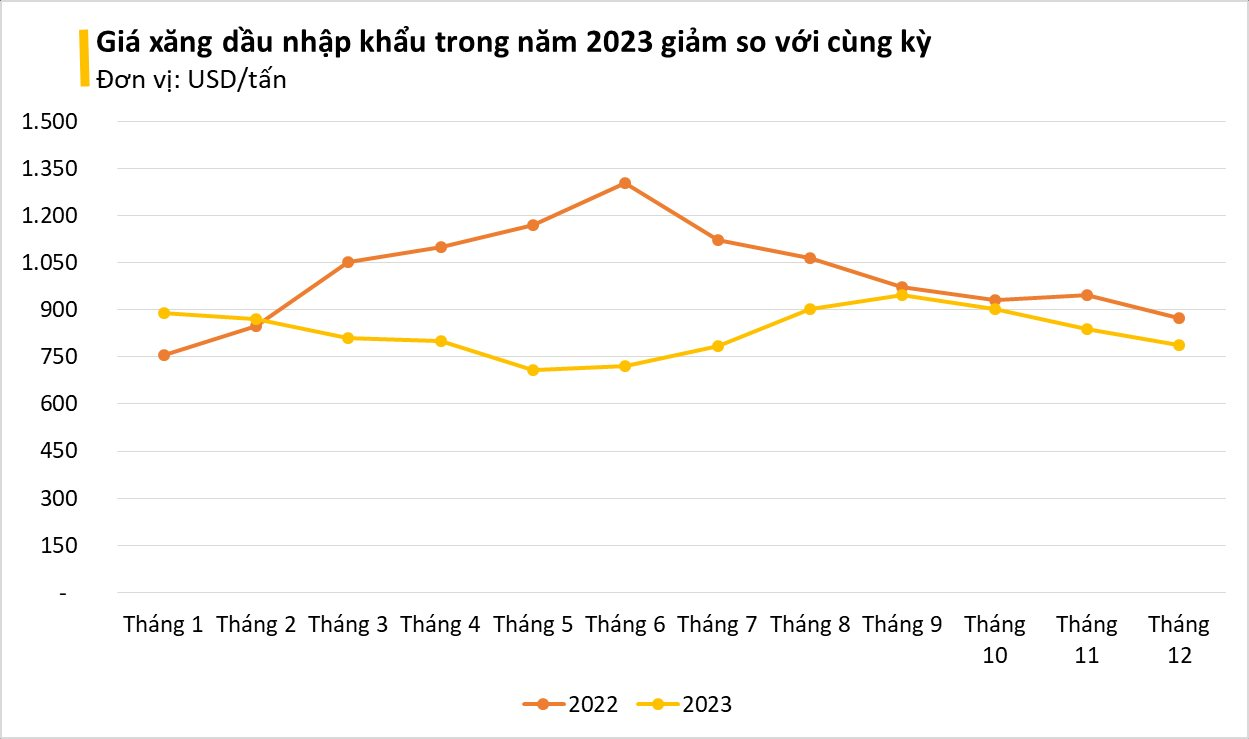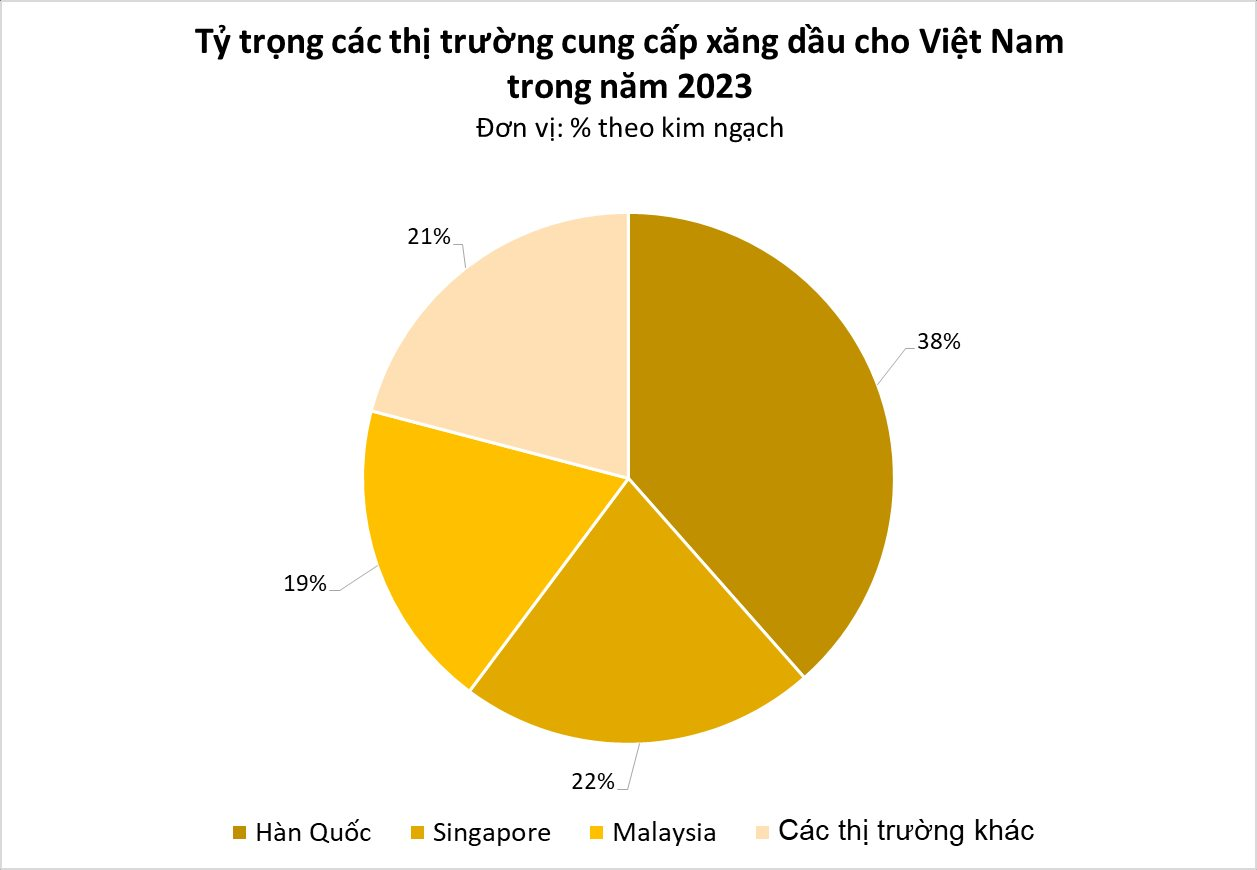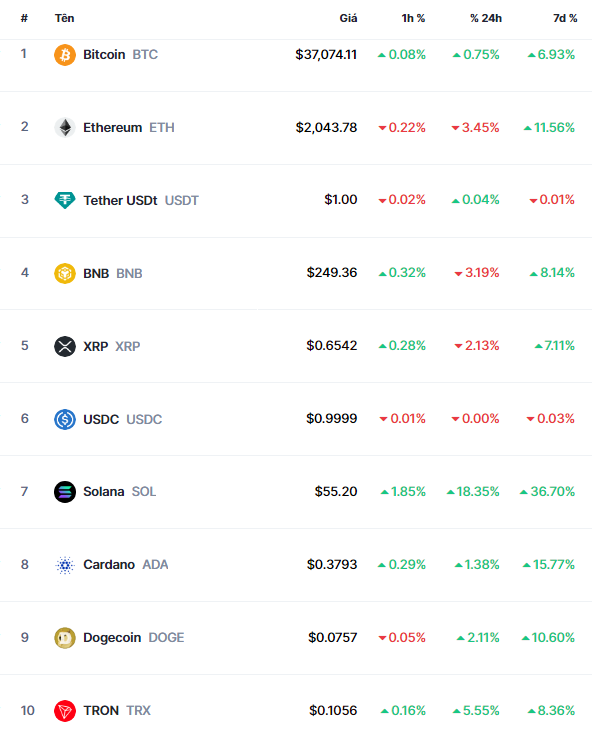
According to the General Department of Customs, Vietnam imported nearly 670 thousand cubic meters of petroleum in December, equivalent to over 526 million USD, an increase of 10.3% in volume and 3.3% in value compared to November 2023. Compared to the same period in 2022, petroleum imports to Vietnam this month still increased by 31.5% in volume and 27% in value.
Overall in the year 2023, Vietnam imported over 10 million cubic meters of petroleum, equivalent to 8.4 billion USD, an increase of 27.9% in volume and 1.1% in value compared to the same period in 2022. The average imported petroleum price in the first 12 months of the year was 829 USD per cubic meter, a decrease of 20.7% compared to the same period in 2022.
In terms of market, in 2023, South Korea, Singapore, and Malaysia were the three main petroleum suppliers to Vietnam, accounting for over 81% of Vietnam’s total petroleum imports.
Regarding South Korea, in December, Vietnam imported 225,790 cubic meters of petroleum from South Korea, worth over 174.8 million USD, an increase of 37.2% in volume and 29.4% in value. In the 12 months overall, Vietnam spent over 3.21 billion USD to import over 3.9 million cubic meters of petroleum from South Korea, an increase of 20.1% in volume but a decrease of 6.08% in value compared to the same period in 2022, accounting for over 38% of the total import value.
The average imported petroleum price from South Korea was 821 USD per cubic meter, a decrease of 21.8% compared to the same period in 2022.
The reason why South Korea became the largest petroleum supplier to Vietnam was due to the 10% tax incentive received from the Vietnam-South Korea trade agreement. This tax rate is significantly lower than the MFN 20% tax rate (applied to goods from WTO member countries).

Singapore ranked second in the structure of petroleum imports to Vietnam in 2023, accounting for nearly 22% in volume and value, reaching 2.2 million cubic meters, worth 1.81 billion USD, an increase of 45.6% in volume and 26.4% in value. In December 2023 alone, imports reached 136,986 cubic meters, worth 114.76 million USD, an increase of 23.4% in volume and 22.2% in value.
The third market in Vietnam’s petroleum imports structure is Malaysia, with imports of 1.9 million cubic meters, worth 1.57 billion USD, an increase of 37.4% in volume and 21.8% in value compared to the same period last year. Malaysia accounted for 18-19% in volume and total import value of petroleum in 2023.
Vietnam is a crude oil exporter but still needs to import a significant amount of crude oil to meet the input requirements for its two domestic oil refineries, Dung Quat and Nghi Son. 80% of the crude oil serving these two refineries comes from imports, while finished petroleum products still need to be imported by about 30% to meet domestic consumption needs.
In reality, crude oil comes in many different types and characteristics, such as sweet crude, light crude, heavy crude, etc. Each type of crude oil will produce different finished products such as gasoline, diesel, kerosene, mazut, and other petroleum products.
Each oil refinery is designed with different technology using different types of crude oil. For example, the Nghi Son oil refinery uses 100% imported crude oil from the Gulf region, the type of oil extracted in the desert or shale. Meanwhile, the Dung Quat oil refinery is designed to consume crude oil extracted from the Bach Ho oil field.
Due to its high dependence, petroleum import activities also face strong impacts from global fluctuations, especially in terms of price.






































